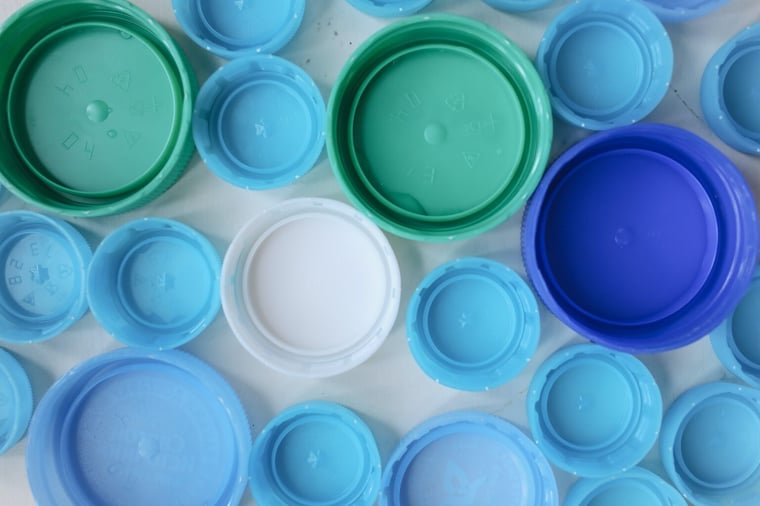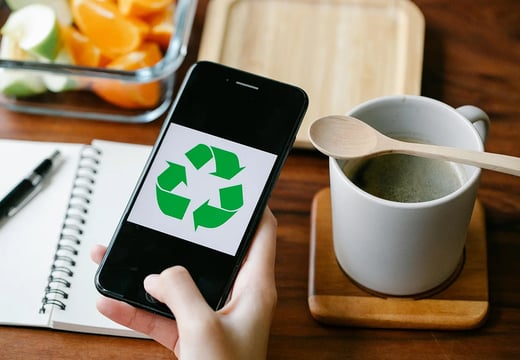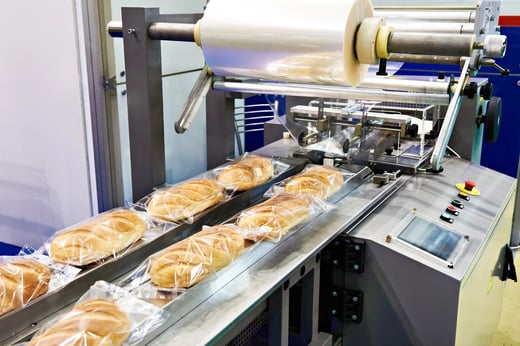
Product sustainability - question purpose, examine validity, explore alternatives
February 2021
By Adrian Swinburne, Head of Consumer at 42 Technology

Making a product more sustainable need not be just about material substitution or reduction.
When designing new products from a blank sheet, designers often have the freedom to take a holistic approach to achieving sustainable designs. However, when addressing the sustainability of existing products this freedom rarely exists. Initiatives are often constrained to exploring substitution of materials to more sustainable alternatives, or simply reducing the amount of material used in the solution.
This applies not only to familiar products and packaging, where the majority of focus has traditionally been, but also to manufacturing processes where issues around water or energy usage, or generation of waste by-products may have equally negative impacts.
Specific examples of these initiatives might include:
- How do I reduce the water consumption of this critical process step in a food manufacturing line?
- How can I move from an existing mixed material packaging solution to a more sustainable, and more easily recyclable alternative?
- How can I eliminate this non-recyclable cap from a single use package?
- Can I reduce the amount of packaging required on this food product by reimagining the product format itself?
This raises the importance of our first step…
Question the purpose
Rather than simply exploring how each of these challenges might be addressed through use of alternative materials or easier and more effective recycling and reuse approaches, we advocate a more fundamental reframing of the question:
What is the purpose of this troublesome component? And how might that purpose be eliminated or delivered in a more sustainable manner?
Take the simple example of the cap…
When I buy a commodity product, whether it is a bottle of shampoo, a can of oil, or an air freshener, I obviously want that product to be in perfect condition when purchased. And equally perfect when I get it home, and be simple and intuitive to use when needed.
The one thing I really do not want is for the product to leak – enter the cap!
But a major problem with this is that the cap’s primary function often becomes redundant as soon as the product is put to first use, and it is either disposed of (ideally but not necessarily into the recycling stream where it might or might not be suitable for recycling) or it remains attached to the main product packaging, potentially resulting in a mixed material recycling problem.
Whilst the natural challenge here might be framed as “how can I make the cap from the same material as the main package, or make it more easily recycled as an individual and separable component?” A more useful question might be “how can I stop the package leaking product until the point at which it is used?”
Of course, the cap may serve other functions, such as maintaining cleanliness. But the important thing is to understand what fundamental functionality, and in particular, what consumer experience is being delivered.
Examine the validity
Having understood the purpose of the component or material in question, the next step should be to Examine Validity of that function.
The true need for the identified functionality should be challenged. For instance, is this an essential feature of the product? What would be the impact of eliminating that functionality?
Perhaps the actual consumer use-case needs to be better understood to establish whether the functionality performs any part of the consumer experience. Or maybe the item in question is a secondary packaging material and can be eliminated through adjustments to the supply chain or retail proposition.
Explore the alternatives
Only once the true need for such functionality is established should the next step – Explore Alternatives – be explored. And the scope of such alternatives should not be constrained to a re-examination of the design of the cap as in this example. It should consider more broadly how the functionality might be alternatively delivered; perhaps through redesign of the dispense mechanism or through a low-cost tear-off membrane removed before first use.
Whatever alternative solutions might be identified, they will of course need to consider a variety of other topics: is it compatible with current manufacturing and supply chain? Is product cost compromised? Does the redesign introduce any regulatory issues? But such additional considerations should not simply be considered as constraining the idea space – they may in themselves provide inspiration for the design changes.
The overriding message here is that, just because product redesign for improved sustainability may be subject to a range of perceived constraints and blank sheet product innovation may not be a practical option, that should not be taken as a reason for not thinking more creatively about how specific sustainability issues might be effectively addressed.
If you would like to find out more please contact:
answers@42T.com | +44 (0)1480 302700

Adrian leads 42T's work in the consumer sector, developing and managing our clients in the food, beverage, home care and personal care sectors.
Share this article:
Related Articles

Sustainability, Industrial
EU packaging waste regulations are a significant opportunity

Sustainability, Product Design
The Eco-design Directive for sustainable products - are product owners ready?

Consumer, Sustainability
Supporting the transition to sustainable packaging materials and heat sealing challenges

What will you ask us today?
We believe in asking the right questions to drive innovation; when we know the right questions, we generate the ideas to answer them.

